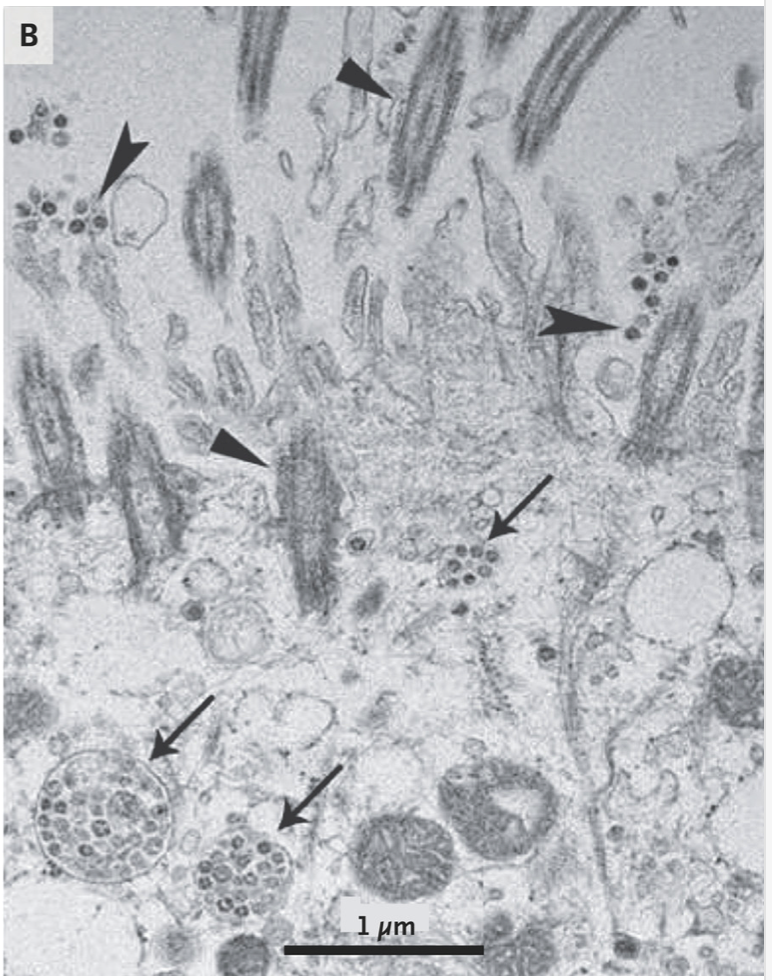Uncategorized
Is Coronavirus viable in aerosol?
According to a recent report by Neeltje van Doremalen, Ph.D. published in the New England Journal of Medicine, 2019-CoV-2 can remain viable and infectious in aerosol for hours and on surfaces for up to 72 hours.

“Our results indicate that aerosol and fomite transmission of SARS-CoV-2 is plausible, since the virus can remain viable and infectious in aerosols for hours”
It was more stable on plastic and stainless steel than copper and cardboard:
The virus was viable up to 72 hours after application to plastic and stainless steel surfaces.
The virus was viable up to 24 hours on cardboard surfaces
The virus was viable up to 9 hours on copper surfaces
SARS-CoV-2 remained viable in aerosols for up to 3 hours
For more information please refer to :
Aerosol and Surface Stability of SARS-CoV-2 as Compared with SARS-CoV-1
March 17, 2020.
Here is a link to the article
https://www.nejm.org/doi/full/10.1056/NEJMc2004973
Virus partials range from 60 to 140 nanometers:

A recent paper “A Novel Coronavirus from Patients with Pneumonia in China, 2019” by Na Zhu, Ph.D., Dingyu Zhang, M.D., Wenling Wang, Ph.D. et al shows that the coronavirus virus particles ranges between 60 to 140 nanometers in size and have distinctive spikes, 9 to 12 nanometers, that give the virion the appearance of a solar corona. Cytopathic effects were observed 96 hours after inoculation on surface layers of human airway epithelial cells
Here is a link to the paper:
https://www.nejm.org/doi/full/10.1056/NEJMoa2001017
Which kinds of masks and respirators can filter 2019-CoV-2?
Droplets produces by humans by coughing and sneezing range in size from 0.5 microns to 10 microns. Mask and respirators are usually rated according to their efficiency at filtering 0.3 microns particles.

PFE (Particulate Filtration Efficiency) is the measure of the efficiency of the masks and respirators in filtering particles passing through it.
Regular surgical masks are loose fitting, covering the nose and mouth, whereas respirators are tight fitting masks and are designed to create a facial seal.
Respirators with high efficiency at 0.3 micron particle size (N95/FFP2 or higher rating) can filter particles down to the size of the coronavirus, which ranges between 0.06 and 0.14 microns in size. Here is why:
High filter efficiency at 0.3 micron size also results in high filter efficiency below this size also due to Brownian motion: The particle’s mass is small enough that it no longer travels in a straight line through the air. It interacts with air molecules and moving in an erratic pattern that allows it to become imbedded in the respirator.
Due to Brownian motion, N95 respirator masks are able to capture more than 90% of tiny 0.01 micron particles (10 times smaller than the coronavirus), and regular surgical masks can capture more than 60% of these particles.
For more information on comparison of FFP2, KN95, and N95 and Other Filtering Facepiece Respirator Classes:
Non-valved respirator masks are preferred to prevent the wearer from spreading infection:

Valved respirators make it easier to exhale air. This makes them more comfortable to wear, and leads to less moisture build-up inside the respirator. However If the wearer is infected with 2019-CoV-2, the valve will mean that their exhaling and coughs will make their way through the mask, and into the air, without filtering due to the valve opening when exhaling. This is why non-valved respirator masks are preferred to protect both the doctor and the patient. Non-valved respirators provide good two way protection, by filtering both inflow and outflow of air.
How to order N95 masks and other protective equipment for your clinic:
Follow this link to verify current availability of Personal Protective Equipment Available For Your Facility.


